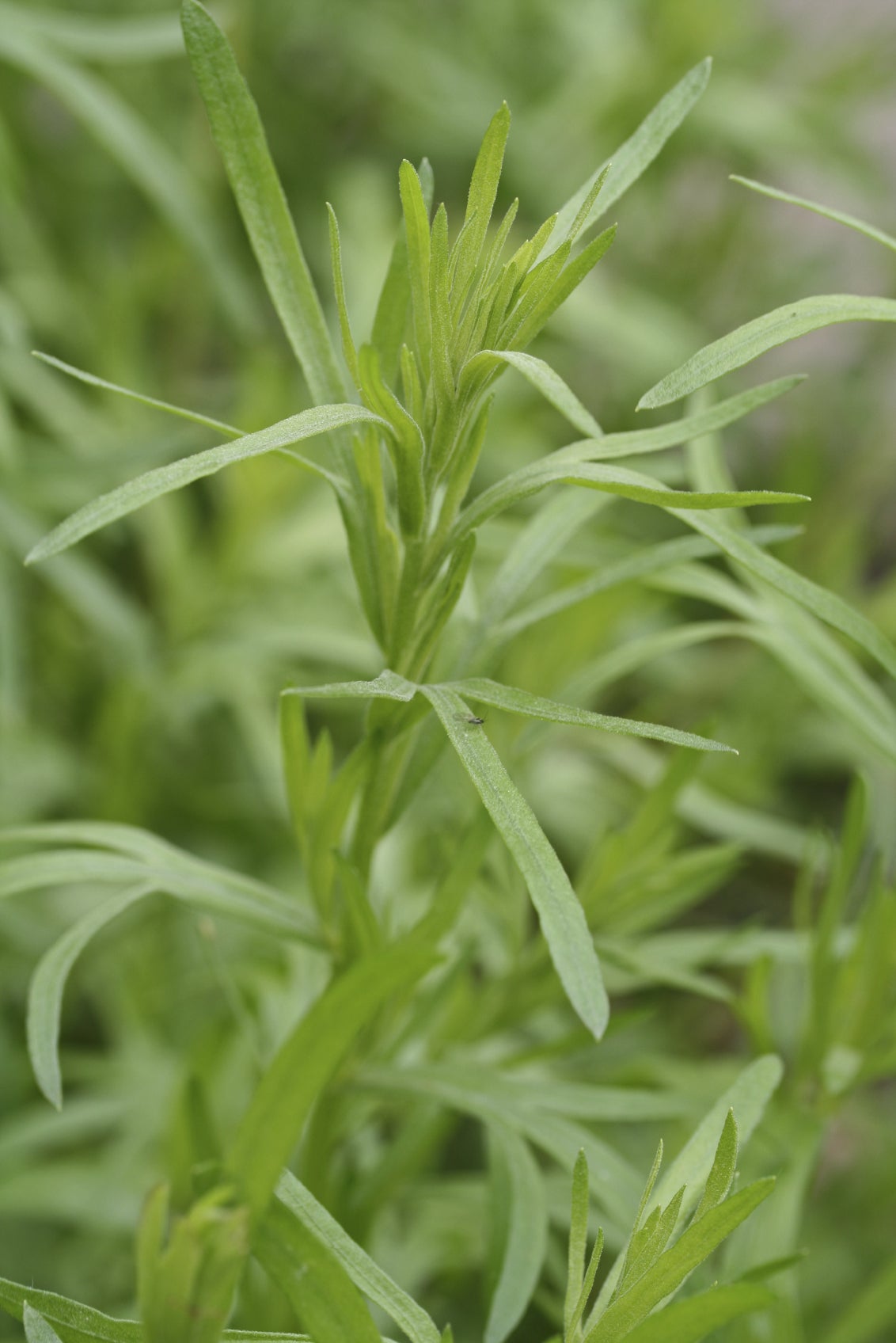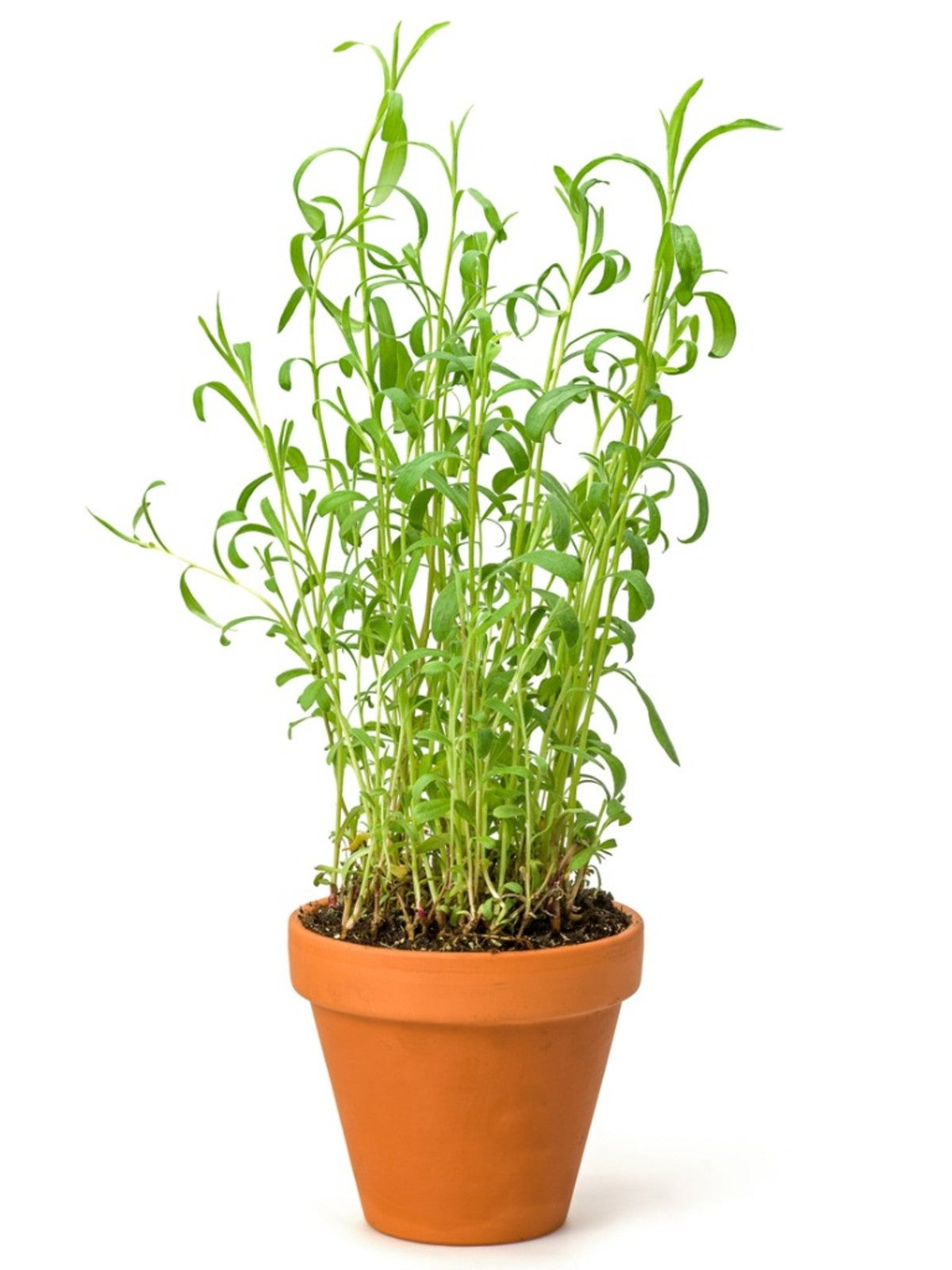Growing Tarragon In The Herb Garden


While it's not particularly attractive, tarragon (Artemisia dracunculus) is a hardy herb commonly grown for its aromatic leaves and peppery-like flavor, which is used for flavoring many dishes and is especially popular for flavoring vinegar. Although tarragon is best grown from seedlings, cuttings, or divisions, some varieties can be propagated from seeds. Growing tarragon can add a sophisticated herb to your garden.
Tarragon Seeds
Tarragon seeds should be started indoors around April or before your area's last expected frost. It's usually easier to sow about four to six seeds per pot using moist, composted potting soil. Cover the seeds lightly and keep them in low light at room temperature. Once seedlings begin to sprout or reach a couple inches (7.5 cm.) tall, they can be thinned down to one plant per pot, preferably the healthiest or strongest looking.
Growing Tarragon Herb
Seedlings can be transplanted outdoors once temperatures have significantly warmed. Tarragon herb plants should be grown in areas receiving full sun. Space tarragon plants approximately 18 to 24 inches (45-60 cm.) apart to ensure adequate air circulation as well. They should also be located in well-drained, fertile soil. However, these hardy plants will tolerate and even thrive in areas having poor, dry, or sandy soil. Tarragon has a vigorous root system, making it quite tolerant of arid conditions. Established plants do not require frequent watering, outside of extreme drought. Applying a generous layer of mulch in fall will help the plants throughout winter too. Tarragon can also be grown year round indoors as houseplants or in the greenhouse.
French Tarragon Plants
French tarragon plants can be grown the same as other tarragon varieties. What sets these plants apart from other tarragon plants is the fact that French tarragon cannot be grown from seeds. Instead, when growing tarragon of this variety, which is prized for its superior anise-like flavor, it must be propagated by cuttings or division only.
Harvesting and Storing Tarragon Herb Plants
You can harvest both the leaves and flowers of tarragon herb plants. Harvesting usually takes place in late summer. While best used fresh, tarragon plants can be frozen or dried until ready for use. Plants should be divided every three to five years as well.
Gardening tips, videos, info and more delivered right to your inbox!
Sign up for the Gardening Know How newsletter today and receive a free copy of our e-book "How to Grow Delicious Tomatoes".

Nikki Tilley has been gardening for nearly three decades. The former Senior Editor and Archivist of Gardening Know How, Nikki has also authored six gardening books.
-
 Looking For Plants To Give You The Soft And Fuzzies? Try These 5 Fuzzy Leaf Plant Options
Looking For Plants To Give You The Soft And Fuzzies? Try These 5 Fuzzy Leaf Plant OptionsLovers of texture, drama, silver foliage and tactile plants will adore these special sensory garden additions. These fuzzy leaf plant options will leave you all aglow
By Susan Albert
-
 Get Ready For A Summer Of Hummers! Grow These Full Sun Hummingbird Plants and Flowers
Get Ready For A Summer Of Hummers! Grow These Full Sun Hummingbird Plants and FlowersIf you’re lucky enough to enjoy a sunny backyard, make sure you are maxing out on your pollinator opportunities and grow these full sun hummingbird plants and flowers
By Tonya Barnett
-
 Tarragon Plant Harvesting: Tips On Harvesting Tarragon Herbs
Tarragon Plant Harvesting: Tips On Harvesting Tarragon HerbsAs with most other herbs, tarragon is cultivated for its flavorful leaves rich in essential oils. How do you know when to harvest tarragon though? Click this article to find out about tarragon harvest times and how to harvest tarragon.
By Amy Grant
-
 French Tarragon Plant Care: Tips For Growing French Tarragon
French Tarragon Plant Care: Tips For Growing French TarragonThe "chef's best friend" and essential herb in French cuisine, French tarragon plants are sinfully aromatic with a scent redolent of sweet anise and flavor akin to that of licorice. Get growing tips here.
By Amy Grant
-
 Tips For Growing Tarragon Indoors
Tips For Growing Tarragon IndoorsGrowing tarragon indoors allows you easy access to the herb and give it protection from cold temperatures. There are a few tips to learning how to grow tarragon indoors. This article will help with that.
By Bonnie L. Grant